
Project Summary
Slow Messenger is a product from an adjacent now in which there is a mode of communication in which speed is not prized, but rather the semantic weight of time, patience, thoughtfulness has to be accounted for. The product is the product of, the result of, research into the implications of Instant Messenger® and instant communication.
Client:
Team: Near Future Laboratory
Project Year: 2007
Project Dates:Published On: May 14, 2024, 10:32
Updated On: Jul 6, 2024, 18:48
Written By: Julian Bleecker
slow-messengerProject Semantic Tags CONCEPT PROTOTYPEDESIGN FICTIONELECTRONICSEVOCATIVE KNOWLEDGE OBJECTPROTOTYPE
The Project
Slow Messenger is a product from an adjacent now in which there is a mode of communication in which speed is not prized, but rather the semantic weight of time, patience, thoughtfulness has to be accounted for. The product is the product of, the result of, research into the implications of Instant Messenger® and instant communication. It is a way of reflecting upon and implying that such is as it is as a result of social and cultural norms and conventions. It is not pejorative or punative, but rather an thing that asks us to ask questions, the results of which may become a deeper appreciation of the benefits of instantaneity, as well as a deeper appreciation of the forms of communication we have had over time: the postal letter/car; the dispatch given to a trusted third party to see that it arrives across oceans and continents with the barest of indications as to its destination (an individuals's name, in some rural town); or immaterial communication.
The Outcomes
This project was more resonant than I would have thought, including finding its way into magazine articles, opening new conversations within a loose federation of a 'Slow Movement' and more. It still has implications and stories to tell.


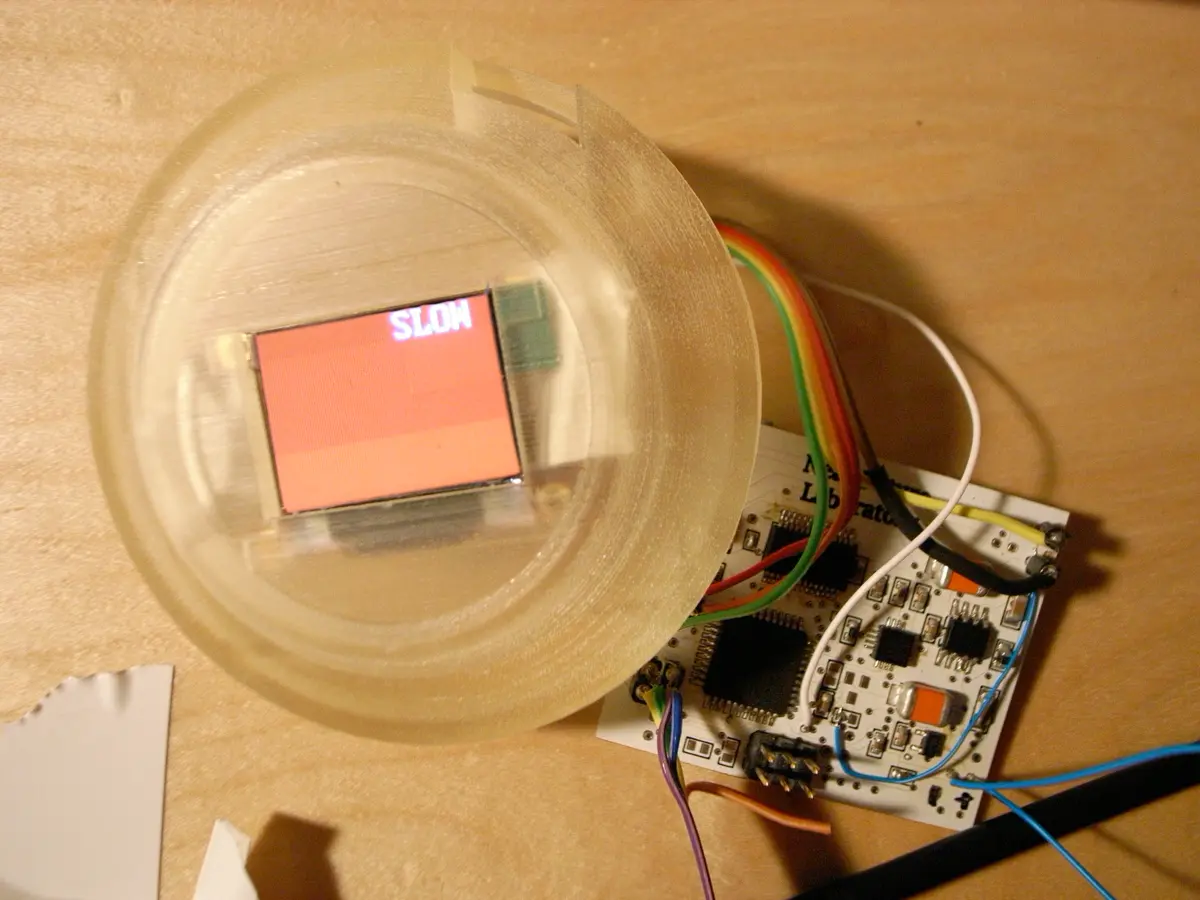



I’ve been fixated on a story my wandering mind told me many months ago about a little theory object that forced me to think about how the connected things in the era of IP networks always do their thing as fast as possible, approaching speeds that are imperceptible to normal humans. Almost without question, this is seen as a good thing. But I wondered what it would take to disrupt that assumption. How hard would the apparatus of connected things fight back? Would it be hard to write slow networked communications software? What is “slow” in the era of connected things? Can their be a slow instant messenger device?
I decided the best way to figure these questions all out was to sketch out what a super slow communications device might be, how it would operate, what it would create in terms of affect for those participating in the messaging, and what it could be “good” for.
Naturally enough, I ran up against all kinds of brick walls. Most people thought I had definitely gone completely misheggeneur. Why in the world would I want something that communicated really, really slow? Everything is supposed to be faster, quicker, more instant that last year’s instant. I mean, processor speeds keep flying through the roof. Broadband gets thicker and quicker. Rates go up when it comes to speed, not down. And I had no clear way to explain why I was drawn to this idea, other than trying to do the opposite of the dominant trend for the sake of seeing what other possibilities for connected digital networking there might be.
This may not be as weird an experiment as it sounds, particularly in an age where the Internet is splitting up into all kinds of tiers of service, with for-pay super high speed networks and bottom-tier, low-rent slow networks. Is it really safe to assume that we’ll always have fast networks available to us? Suppose you had to make a choice for economic reasons – you can send this E-FedEx for $43 and it’ll get there in 1200 milliseconds, or send it E-Postal for $3.19 and it’ll arrive sometime early next week, probably. I mean, it wouldn’t surprise me if this were a likely near-future world. It really wouldn’t.
So, how can slow be good? In my wandering mind I imagined a little device that slowly, very slowly, spilled a message out one letter at a time. Like a slow-scan signal from an interplanetary probe, feeding back a nice galactic photo over the course of 32 hours. Some of those messages might have a certain enjoyable anticipation to them — that’s a good thing..affect in messages where we’ve perhaps re-oriented our sense of affect for communication because we’ve been learning how to expect our communications faster or we expect less from our communication because most of the electronic kind gets all gummed up with crap and spam?
I’m also sort of speculating that this experiment might teach me more about how the “weight” of pre-digital interaction rituals can be re-invested with their pre-digital semantic heft even in the age of electronic mail. That is, can the momentum and weight (of time, of material things moving so as to make connections between people, of haptic/touch/proximity connections based on material coming in contact with things) imbue digital communications with something other than the transfer of information?
Boy, that’s out there. What I’m wondering is — what happens when I have to invest some material energy to get a message between (or from) someone and myself? That’s all this is — it takes three things to get the message going and finally delivered in its entirety.
1. Time, lots of it.
2. Commitment — the thing only works if I keep it close. If it’s off on its own, it slows down its delivery to glacial proportions.
3. Movement — I basically need to carry it with me wherever I go. And if I don’t go anywhere..if I sit at my computer all day, kind of like I did this entire afternoon and evening? That message just isn’t going to move anywhere.
At the end, perhaps a week or so, the message will start revealing itself, one character at a time.
Obviously, this is for the dedicated communicator, who enjoys the anticipation of a message from someone extra special.
This prototype is using a small 96 x 64 pixel OLED display by 4D Systems and the idea is that you’d have your “instant” messages displayed over relatively long periods of time, and the more you carried the messaging device with you — the more you held it — the more of the message you would see. If you left the device by itself — thereby not really showing much commitment or affinity to the message — the longer it would take for the message to reveal itself. The conceit of the project is to create a kind of “durable affinity” amongst the messaging participants. By coupling the message’s slow unfolding to a tangible object that the recipient must hold and carry around, the communication has a kind of interaction ritual that might be more intimate than punching little plastic squares while staring at a screen. Turning time, touch into a condition of affinity and commitment is the interaction ritual we are exploring.
The project is a “theory object” — not necessarily a product in the sense of something that could have a deep impact on the quarterly results of a large public company. It is meant to be a way to critique an aspect of digital networked interaction through a provocative designed object. Going beyond speculation to specification, design, fabrication, prototype experiences, iteration is significant. It creates something that helps me think about the questions that were initially raised in a day dream much, much more than only spinning the thoughts in my head and as writing on paper could ever possibly do. Constructing the device – taking the idea and making it artifact and then giving them to people to experience and provide their thoughts – is a crucial way to think about the questions and the larger problem of having sensible things to say about the near future of these sorts of interaction rituals.
Efficient, quick communication is a product of power-politics. In order to exert one’s influence geographically, it’s necessary to communicate one’s will over distances and do so in as little time and with as much efficiency as possible. Slow messaging just doesn’t make sense in that context. And that simple necessity has soaked through most of our forms of communicating, even when we are not particularly powerful. It just becomes an assumption that communication happens quickly – not because it cannot be any other way, but because it has become part of the unquestioned “DNA” of communication as a social practice.
But, as in most of our projects, we want to work from unconventional assumptions in order to see what the experiences of communication in a different “anti-” universe might be like. What can we learn about our existing social practices of communication – instant messaging, SMS, always-available styles of presence online – if we do an experiment where the assumption is the opposite. In this case, if we make communication much slower, what do we learn about new ways of relating and sharing with our friends and loved ones? We’re not necessarily assuming that this is the best way to communicate, for example. We’re not making a new product or something of this sort. It is very much an experiment in design as a way to answer some perplexing questions about the relationships we maintain through all these peculiar and compelling messaging systems.
https://www.wired.com/beyond-the-beyond/2019/01/near-future-laboratory-slow-messenger/
https://www.vice.com/en/article/ex5x4k/talking-to-the-future-humans-julian-bleecker




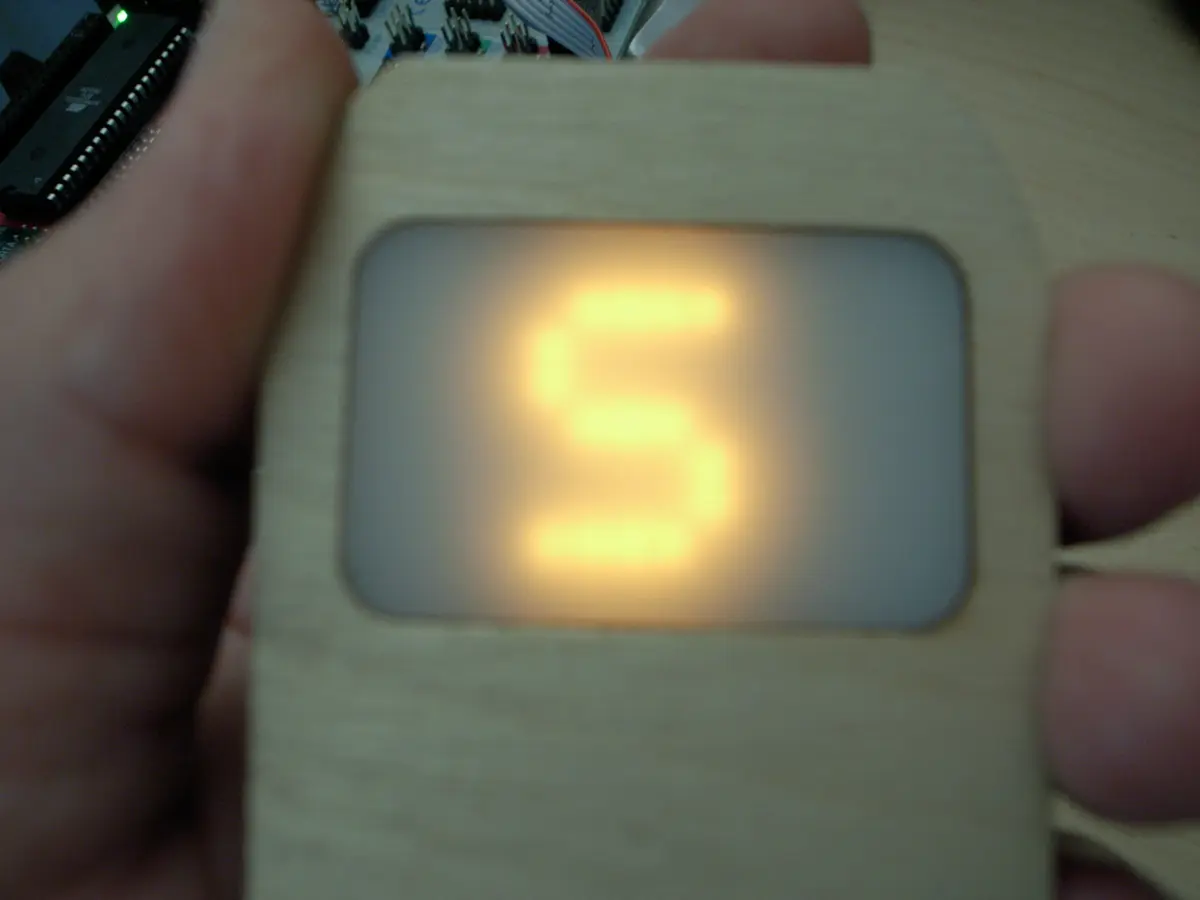













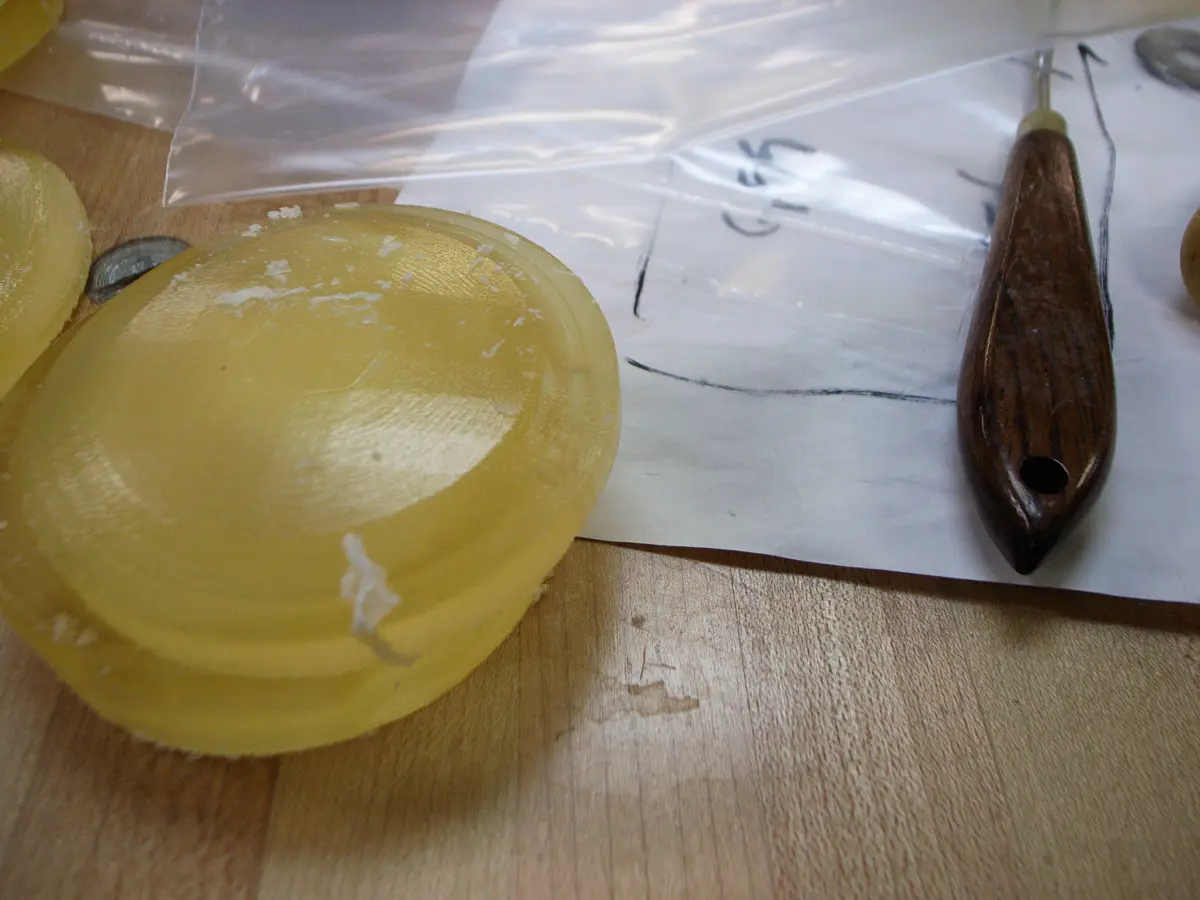




















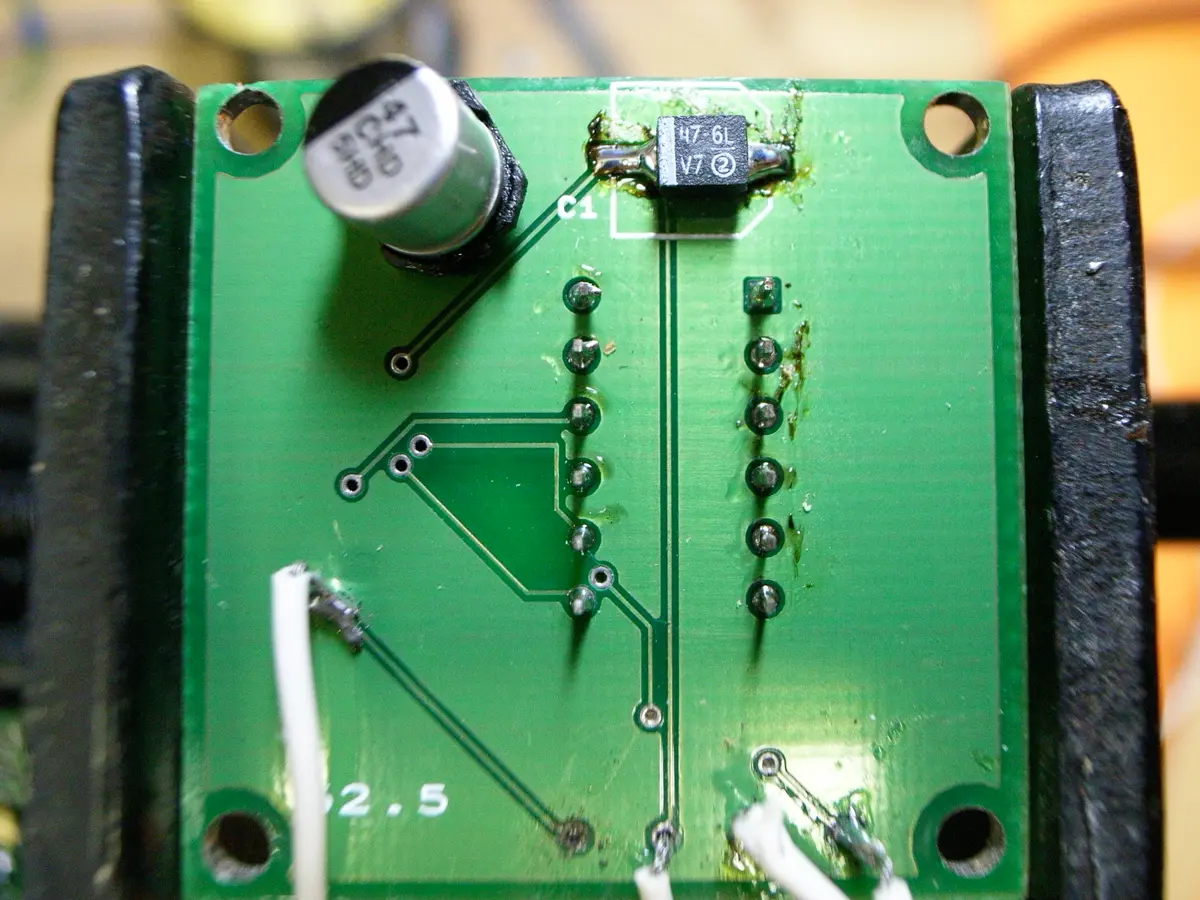

















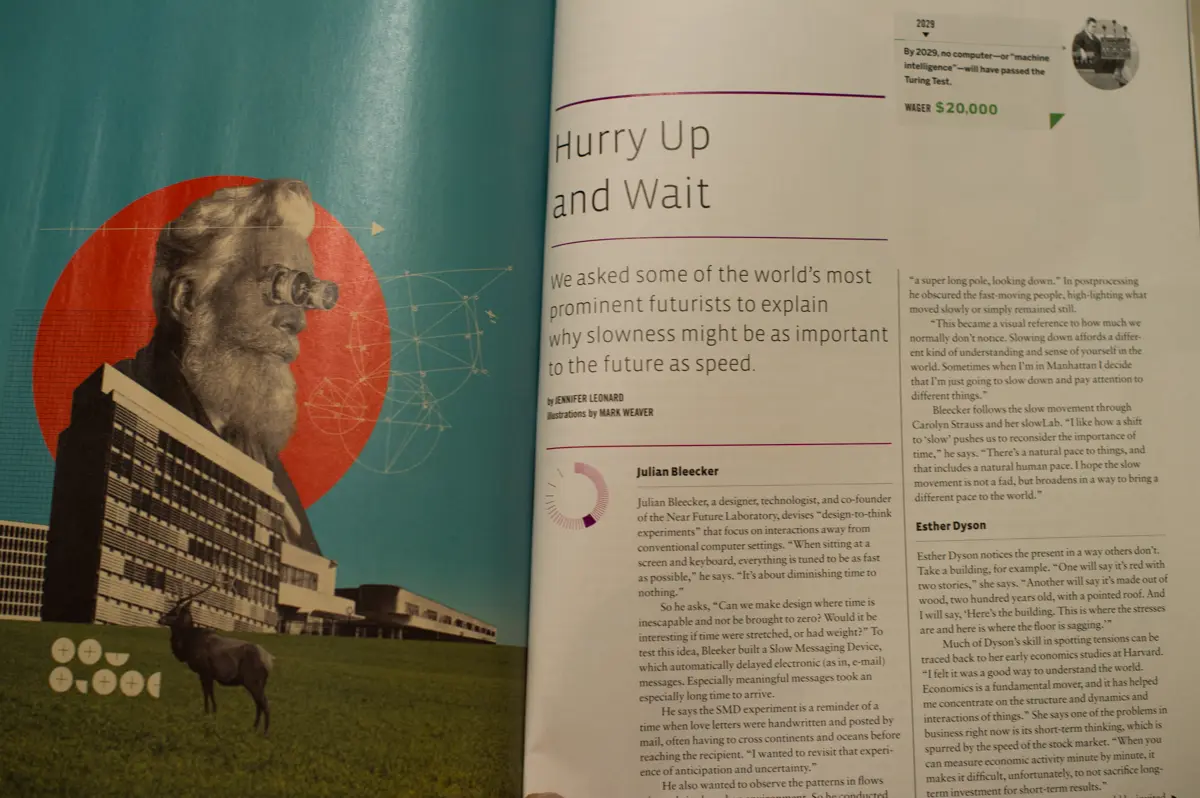



Use the Contact Form below to discuss how you can engage Near Future Laboratory to help you make sense of your organization's possible futures.